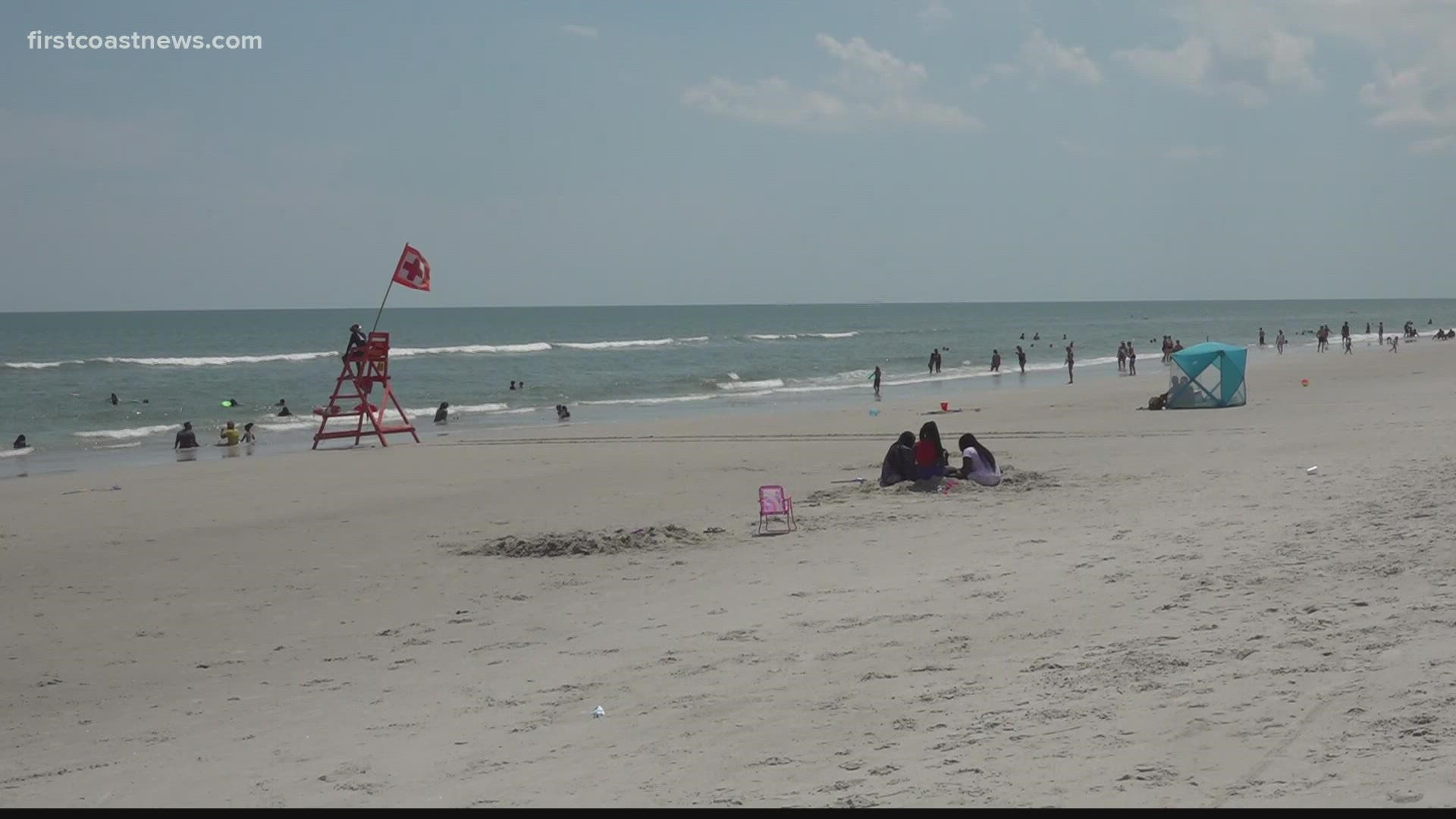JACKSONVILLE BEACH, Fla. — Lifeguards are urged visitors to pay attention to warning flags Monday, after a weekend of dangerous ocean conditions.
More than 30 lifeguards and six officers patroled the more than four miles of Jacksonville Beach in anticipation of the Labor Day crowds.
A yellow flag flew over the sand at Jacksonville Beach, but Saturday and Sunday saw red flags warning of strong rip currents and high waves.
Kensley Giraldo and her family were enjoying Jax Beach on Monday for the first time since moving to Florida. They said the was beach not too crowded, but the waves were strong enough to knock Giraldo off her boogie board.
“It was really warm but it was really, there were like really big waves so it was kinda hard and I fell off a few times," Giraldo said.
There are five colors of flags, ranging from safe to beach completely closed.
- Green Flag- Calm Ocean Conditions. Swim near a lifeguard.
- Yellow Flag- Moderate Ocean Conditions. Waves, long-shore currents, and rip currents are present; danger may increase greatly depending on tide and/or location. Check with your lifeguard before entering the water.
- Red Flag- Dangerous Ocean Conditions. Persistent large waves, strong long-shore current, strong rip currents.
- Double Red Flag- No water activity allowed. Water is closed.
- Purple Flag- Dangerous Marine Life Present. Although there is always dangerous marine life in the ocean, when the purple flag is seen flown, bathers should be alert that there is an influx of dangerous marine life at the time.
Lifeguards said even with the yellow flag, conditions can still be treacherous.
“We need to stress to all beachgoers just because it looks calm doesn’t mean it’s safe," said Captain Maxwell Ervanian of Jax Beach Lifeguards. “We’ve had lots of the ocean floor turned up from the strong swells to where we’re going to be seeing heavy rip currents were going to be expecting to see the shallow sand bars, the high sand bars, the deep slews."
Ervanian explained a yellow flag day can make it hard for children to stay above water. He suggests parents create their own set of safety rules, something Giraldo mom’s did before getting in the ocean.
“Number one rule, they have to stay close and they have to stay visible to mom and dad and can’t go too far, so above, not going past their knees," said Giraldo said.
With four miles of beach, lifeguards have a special warning for parents.
“If they are to get separated from their kids immediately go to a lifeguard," Ervanian said. "Do not attempt to look yourself. It’s much easier for 42 people to look for you kids than it is for 1 or 2 people."
If a lifeguard is blowing their whistle, do what they say and look for their hand signals that will give you directions. A lifeguard will try to prevent accidents before they happen, so always listen even if you think you’re in the clear.
“They tell us all the time, stop talking to us leave us alone we’re perfectly fine but what they don’t realize is that they are only a couple of yards away from a really dangerous rip current or they’re approaching a really deep slew and we’ve noticed they’re not great swimmers," said Captain Ervanian.

